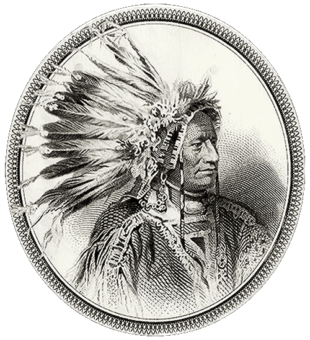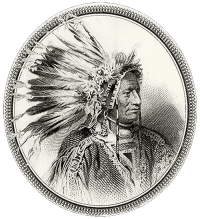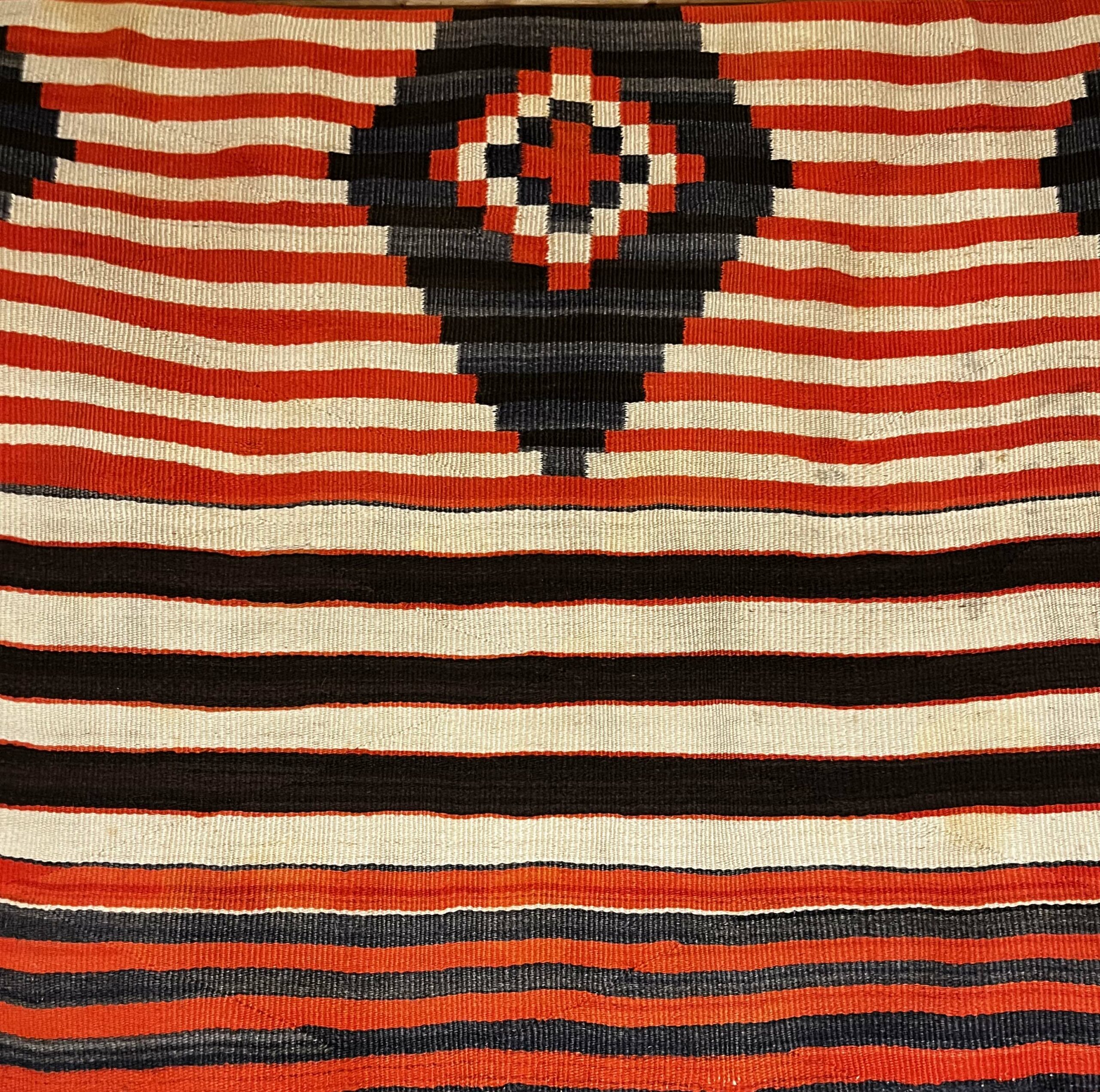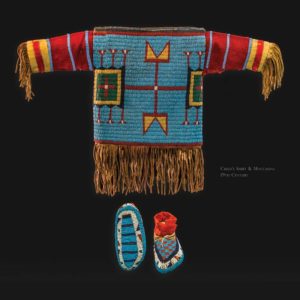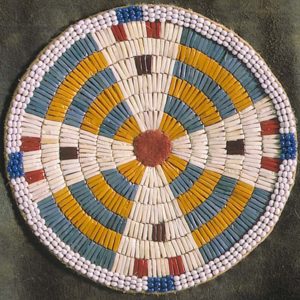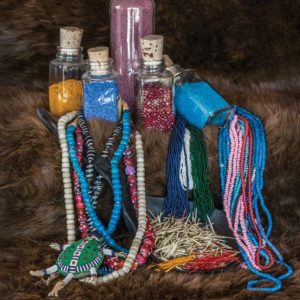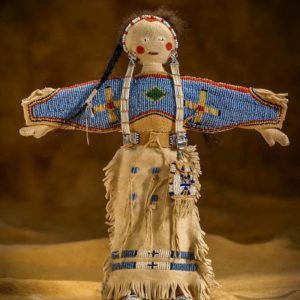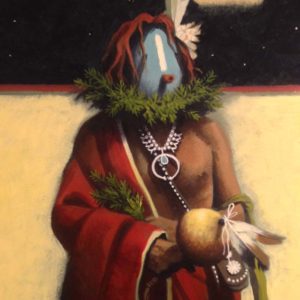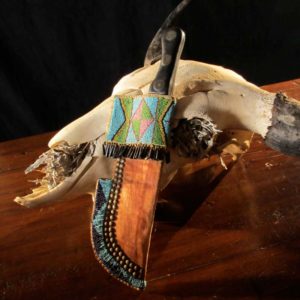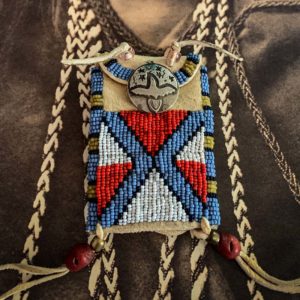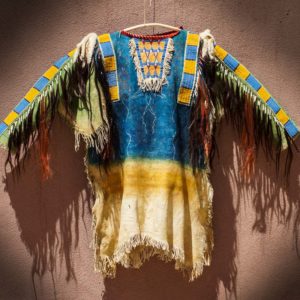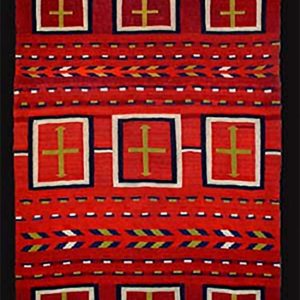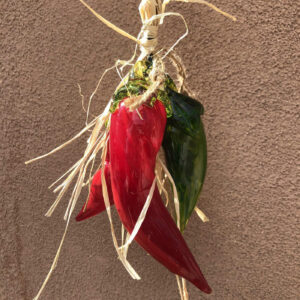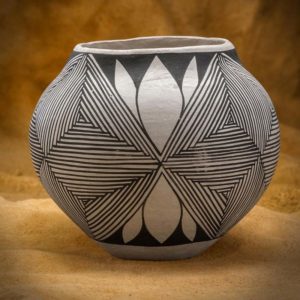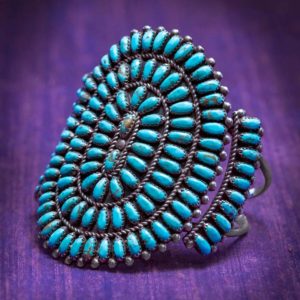Transitional Navajo Blanket, 1895
Navajo Transitional blankets were created by Navajo weavers from about 1885 to 1910. In terms of construction, you can think of these Transitional weavings as being “in between” a rug and a blanket: They are thicker and heavier than a Navajo wearing blanket yet softer and less rugged than a Navajo rug. Transitionals were woven during the time that the pressures of a changing consumer market forced Navajo weavers to stop making blankets for wearing and instead weave floor rugs to sell to tourists and buyers back east. The change from weaving blankets to rugs did not occur overnight, taking a good 15 years to evolve. During this transitional time, weavers exhibited a wide range of innovative designs and color choices, bolstered both by the freedom of not needing to make the same kind of blankets that had been woven for generations and also having increased access (through the trading posts) to aniline synthetic dyes. Navajo Transitional blankets are usually made with a soft, hand-spun churro yarn. This yarn has long, silky fibers that are pleasing to the touch. Occasionally, you will also encounter the inclusion of raveled commercial yarns (commercial fabrics that were unraveled, spun, and woven) in addition to the churro wool. Germantown weavings were also made during this time period, though they are not considered to be Transitional blankets as they have their own unique place in Navajo weaving history.
MATERIAL: Churro Wool
SIZE: 56 x 90″
ORIGIN: Navajo
DATE: 1890-95
PRICE: $6000.00

